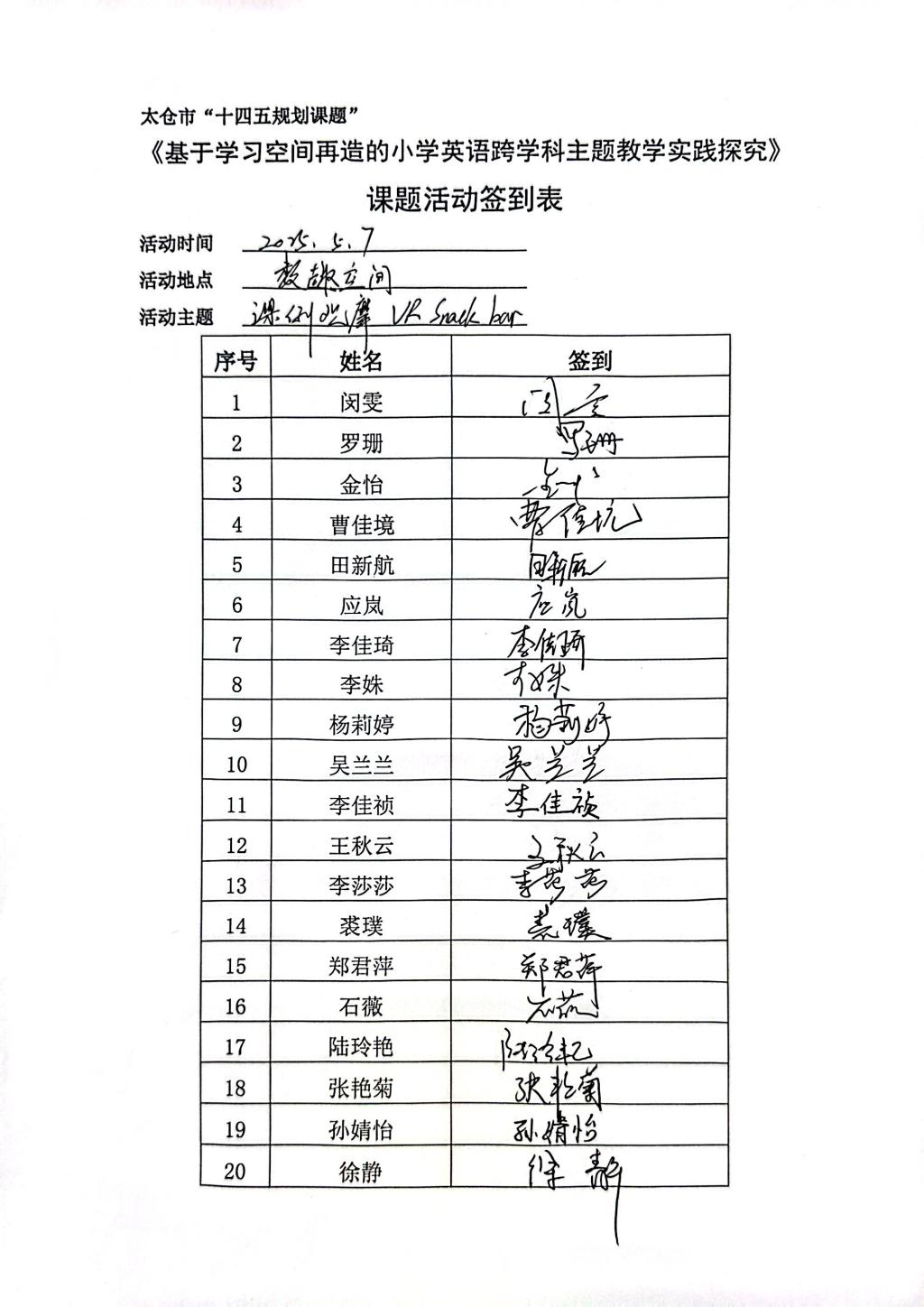过程 一、课例展示 Step 1:Warm up 1. Lead in 教师利用VR软件,创设“校园美食节”情境,激发学生学习兴趣。 2. Listen and answer 学生听录音,补全句子,以听力的形式让学生获取关键信息,并过渡到接下来的教学环节。 3. Let’s match. 学生通过希沃游戏,将食材与“五园一舍”进行匹配。 Step 2:Prepare food and drinks! 1. Let's gather food! Ingredients from the five gardens and a yard will be showed in the way of games. Students will know the food cooked with these ingredients from games. 2. Let's chant! A chant about the food that can be found from the five gardens and a yard will be singed by the whole class. 3. Let's calculate! (1)The AI teacher will ask students to offer 60 sets of food. He also asks students to calculate the accurate amount of ingredients needed. Then the students will first think out the equation to calculate. After that, students will calculate in groups. (2)Students need to calculate the amount of Niuniu coin that should be prepared for every class. They will solve this problem in different ways. Step 3:Serve politely! 1. Let’s review! The AI character Sue will occur as a customer. Students will be leaded to review the sentence patterns needed by waitress and customer.学生复习所学重点句型。 2. Watch and record! Students will watch the video and record the AI character Sue’s order. After checking the order of Sue, students will be asked to talk about Sue’s big order. 看视频,记录AI人物的点单内容,再次强调要珍惜粮食。 Step 4: Attract customers! 1. Let's judge and think! 展示两张菜单,让学生自主思考优劣,并鼓励学生结合实际生活,进行头脑风暴。 2. Design your menu! 学生以小组为单位,设计菜单,须包含“五园一舍”特色菜品。 3. Let’s show! Students will be invited to show their menus on the stage and to serve customers in a real situation. Their performance will be assessed by the “customers”.
二、课例研讨 田新航:通过创设具体情境,即给全校60个班级提供试吃,让学生在真实且熟悉的环境中,体验本课学习。同时可以将所学真正运用到实际生活中。
吴兰兰:通过将本单元语言知识与数学学科“解决问题”策略相结合,提升解决具体问题的能力和跨学科思考能力。
石薇:第二环节以学校特色“牛牛币”为媒介,邀请学生帮助老师一起计算需要为每班至少和至多准备多少牛牛币,帮助学生加深分情况解决问题的思维方式。
陆玲艳:教师在教学的同时,自然地渗透食物来之不易的思政教育。
思考:(可针对“所要解决的问题”) 1. 虽然本次课程通过VR技术和“五园一舍”情境创设了生动的学习空间,但是否还有其他技术手段或情境设计可以进一步优化学习空间?我们可以探索更多元化的学习空间优化策略,对比不同策略对学生学习效果的影响,找到适合的教学方法。 2. 虽然本次课程通过“牛牛币”和“珍惜粮食”的情境自然地渗透了思政教育,但这种渗透是否足够深入?是否可以通过更多的情境设计或活动,让学生更深刻地理解和践行节约粮食的理念? 3. 本次课程通过小组合作、展示等方式对学生进行了评估,但是否可以设计更全面、更科学的评价标准?是否可以结合过程性评估和终结性评估,对学生的学习过程和结果进行更全面的衡量?

|

